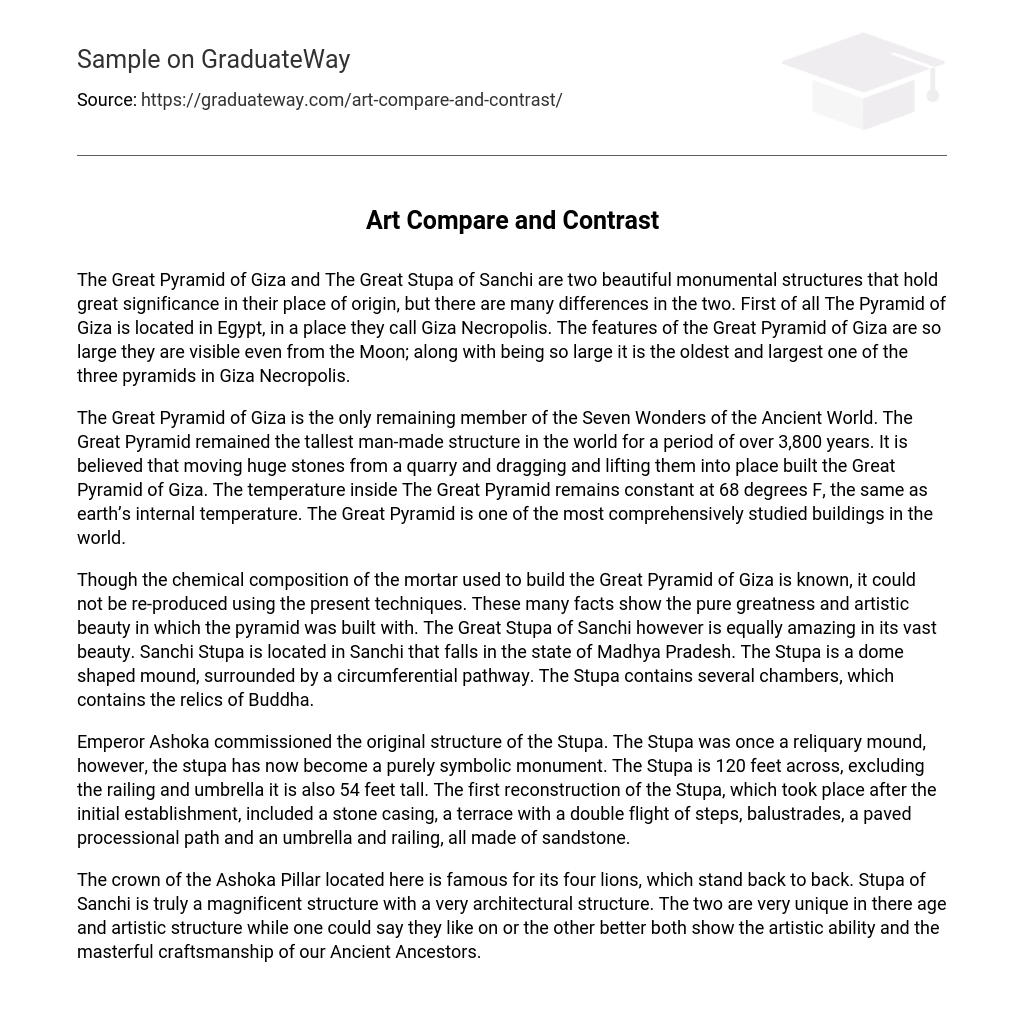The Great Pyramid of Giza and The Great Stupa of Sanchi are both important monuments in their respective regions, but they have notable differences. The Pyramid of Giza is located in Egypt’s Giza Necropolis area and is known for its enormous size, so much so that it can be seen from the Moon. It is also the oldest and largest pyramid among the three in Giza Necropolis.
The Great Pyramid of Giza, the only remaining monument from the Seven Wonders of the Ancient World, was the tallest man-made structure for over 3,800 years. Its construction included moving large stones from a quarry and carefully placing them. The temperature inside the pyramid is consistently 68 degrees Fahrenheit, matching Earth’s interior. As a result, scientists have extensively researched this remarkable structure, making it one of the most thoroughly studied constructions on Earth.
Despite the known chemical composition of the mortar used in the construction of the Great Pyramid of Giza, it is currently impossible to replicate it using modern techniques. These facts highlight the remarkable magnificence and artistic elegance with which the pyramid was built. In a similar vein, the Great Stupa of Sanchi in Sanchi, Madhya Pradesh is equally breathtaking in its immense beauty. This Stupa, shaped like a mound with a dome, is surrounded by a pathway and contains chambers that hold Buddha’s relics.
Emperor Ashoka originally commissioned the construction of the Stupa, which was initially a reliquary mound. However, over time, it has transformed into a purely symbolic monument. The Stupa’s dimensions are 120 feet in width (excluding the railing and umbrella) and stands at a height of 54 feet. The first reconstruction of the Stupa included various additions such as a stone casing, a terrace with a double flight of steps, balustrades, a paved processional path, and an umbrella and railing – all made of sandstone.
The Ashoka Pillar’s crown is renowned for its four back-to-back lions, while the Stupa of Sanchi is a truly magnificent structure with an impressive architectural design. Despite their different ages and artistic structures, both demonstrate the remarkable artistic abilities and masterful craftsmanship of our ancient ancestors.





